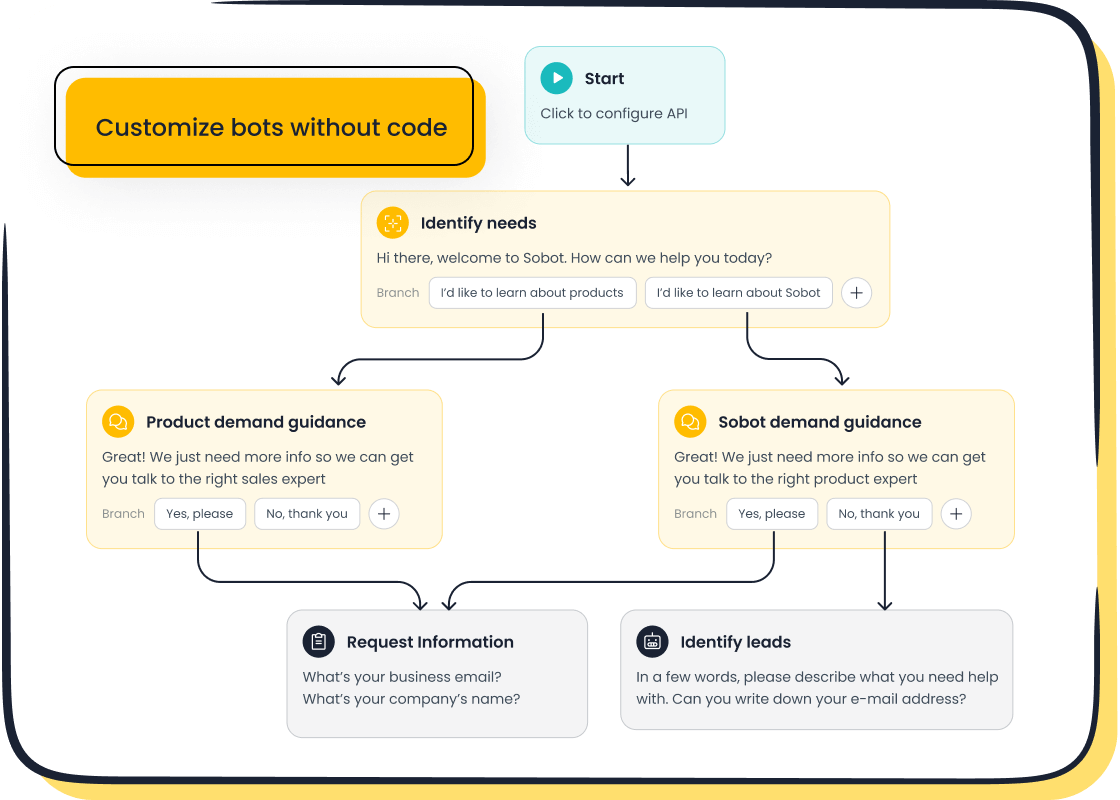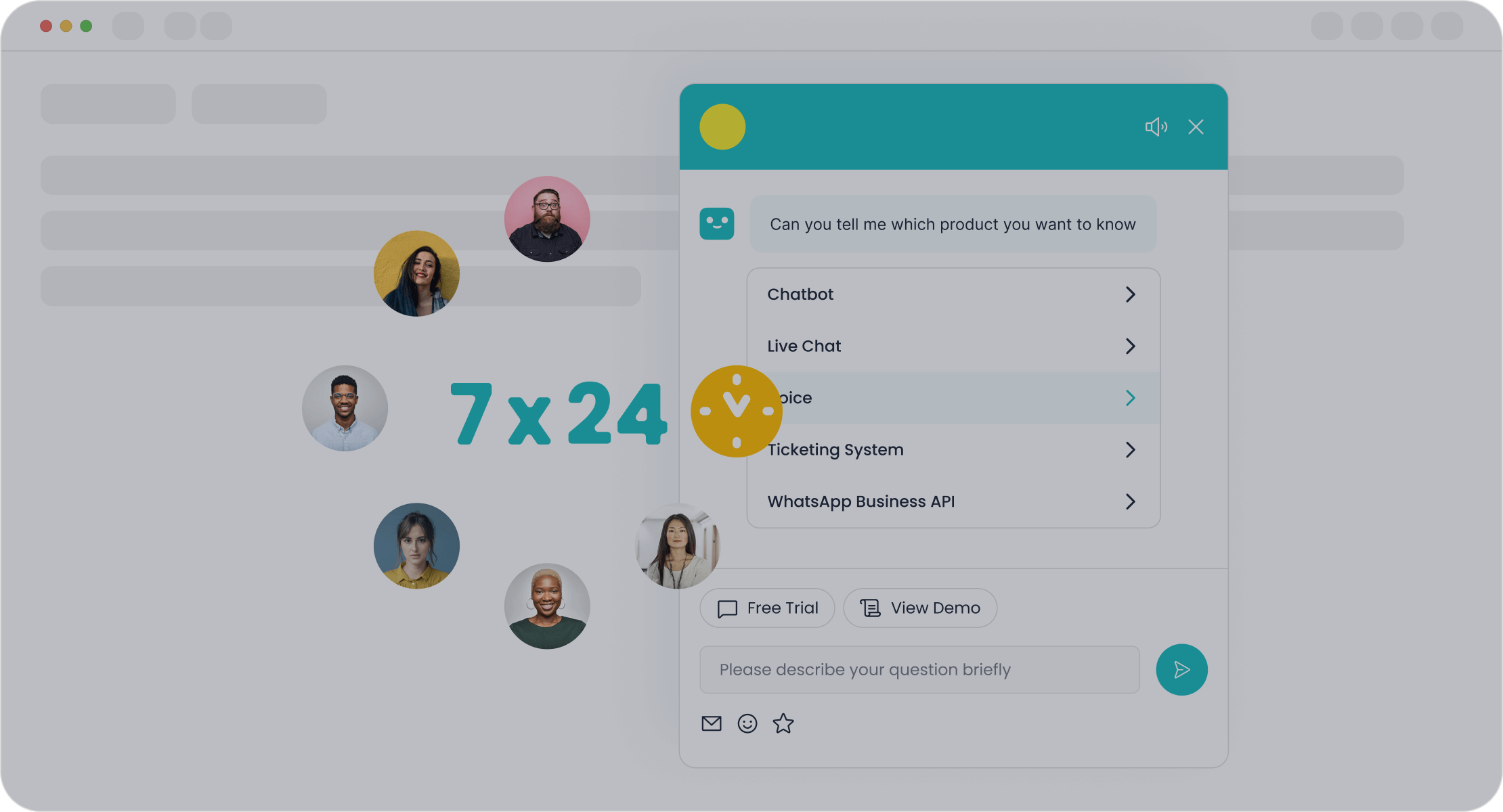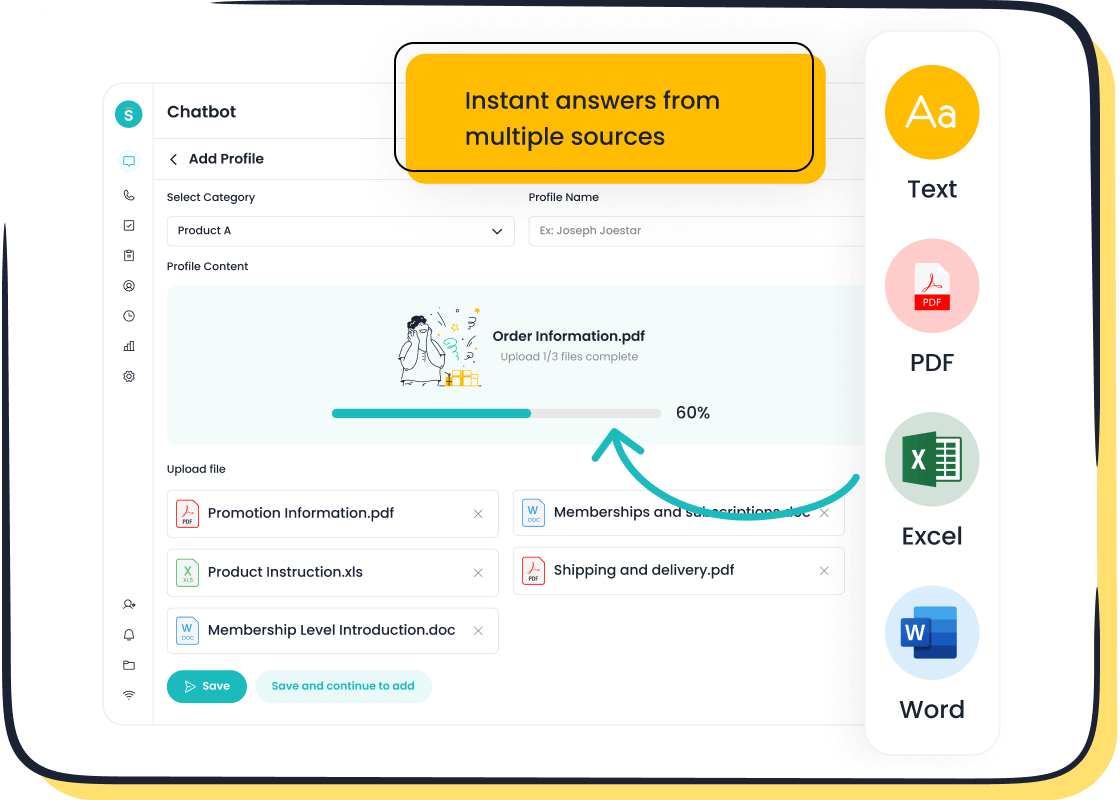Steps to Implement Robotic Process Automation in 2025

Robotic process automation (RPA) has revolutionized how businesses operate, driving unprecedented levels of business efficiency in 2025. With 53% of companies already adopting RPA and 78% planning increased investments, automation has become a cornerstone of modern operations. By automating repetitive tasks, businesses achieve higher productivity and reduce errors, ensuring consistent quality. A structured RPA implementation approach enables organizations to scale seamlessly while realizing an average ROI of 240% within months.

Sobot, a leader in intelligent automation, empowers businesses with solutions like the Sobot AI Chatbot. This tool enhances efficiency by automating customer interactions, cutting costs, and boosting conversions. Trusted by global brands, Sobot ensures businesses stay competitive in a rapidly evolving landscape.
Define Objectives and Scope for RPA Implementation
Align RPA Goals with Business Strategy
Focus on improving customer service and operational efficiency.
To achieve success with RPA, you must align its goals with your business strategy. Start by analyzing your current IT processes to identify areas where automation can enhance customer service and operational efficiency. For example, companies like Bank of America have implemented AI chatbots to handle customer queries, improving service speed and satisfaction. Similarly, Walmart uses RPA to automate inventory management, streamlining supply chain operations. These examples demonstrate how aligning RPA with strategic objectives can drive measurable results.
Set clear and measurable goals for your RPA initiatives. Focus on key areas like reducing response times, minimizing errors, and improving customer satisfaction. By doing so, you ensure that your automation efforts contribute directly to your organization’s overall objectives.
Identify key performance indicators (KPIs) for success.

Defining KPIs is essential for tracking the success of your RPA implementation. Choose metrics that reflect your business priorities. For instance, monitor customer satisfaction scores, task completion rates, and cost savings. Agilent, a leader in life sciences, achieved a sixfold increase in efficiency and a 25% cost reduction by integrating Sobot’s AI-powered chatbot. Their success highlights the importance of using KPIs to measure the impact of automation on business outcomes.
Determine Automation Scope
Identify repetitive, rule-based tasks suitable for automation.
Not all tasks are ideal for automation. Focus on repetitive, rule-based tasks that consume significant time and resources. Examples include data entry, invoice processing, and customer query triaging. Processes prone to human error or requiring high accuracy also make excellent candidates. For instance, Google automates onboarding processes to ensure consistency and reduce errors. By targeting such tasks, you can maximize the efficiency and reliability of your operations.
Prioritize processes with high ROI potential.
When determining the scope of automation, prioritize processes that offer the highest ROI. High-volume tasks or those critical to your business operations often yield the greatest returns. Use criteria like scalability and standardization potential to evaluate each process. For example, Walmart’s inventory automation reduces stockouts, directly impacting revenue. Similarly, Sobot’s AI Chatbot helps businesses save up to 50% on agent costs while boosting conversions by 20%. These examples show how focusing on ROI ensures your RPA implementation delivers tangible benefits.
Select the Right RPA Tool for Your Business
Evaluate RPA Platforms
Compare features, scalability, and ease of integration.
Choosing the right RPA tool is critical for successful implementation. Evaluate platforms based on their ability to integrate seamlessly with your existing systems and scale as your automation needs grow. Look for features like real-time monitoring, analytics tools, and security measures such as data encryption. A user-friendly interface, especially low-code or no-code options, ensures accessibility for business users without technical expertise.

For example, Sobot’s AI Chatbot offers omnichannel support and integrates effortlessly with CRM systems, enabling businesses to automate customer interactions efficiently. Its drag-and-drop interface simplifies bot creation, making it ideal for companies seeking quick deployment. By prioritizing scalability and ease of use, you can ensure your RPA tool adapts to your evolving business requirements.
Consider tools like Sobot's solutions for customer service automation.

Customer service automation is a key area where RPA tools excel. Platforms like Sobot’s AI Chatbot enhance efficiency by handling routine queries autonomously, reducing agent workload by up to 70%. This tool operates 24/7, saving businesses up to 50% on staffing costs while boosting conversions by 20%. Its multilingual capabilities and proactive messaging features make it a versatile solution for global businesses.
When evaluating RPA tools, focus on those that offer specialized features for customer service. Sobot’s chatbot, for instance, integrates with WhatsApp and other channels, ensuring seamless communication across platforms. Such tools not only improve operational efficiency but also enhance customer satisfaction.
Assess Vendor Support and Compliance
Look for vendors offering training and ongoing support.
Vendor support plays a vital role in ensuring smooth RPA implementation. Choose providers that offer comprehensive training programs and ongoing technical assistance. This helps your team adapt to the new system and resolve issues quickly. Sobot, for example, provides robust support services, including onboarding assistance and regular updates, ensuring businesses maximize the benefits of their automation tools.
Additionally, consider vendors with a proven track record of reliability. Sobot’s solutions, trusted by brands like Agilent and Samsung, demonstrate the importance of partnering with experienced providers for long-term success.
Ensure compliance with industry standards and regulations.
Compliance is non-negotiable when selecting an RPA tool. Ensure the platform adheres to industry standards and regulatory requirements, especially if your business operates in sectors like finance or healthcare. Features like audit trails and data encryption safeguard sensitive information and maintain compliance.
Sobot’s AI Chatbot, for instance, incorporates advanced security measures to protect customer data while meeting global compliance standards. By choosing tools with robust security features, you can mitigate risks and build trust with your customers.
Process Analysis and Design for RPA Success
Map and Analyze Current Processes
Document workflows and identify inefficiencies.
To ensure successful RPA implementation, you must first map and analyze your current processes. Start by documenting workflows to gain a clear understanding of how tasks are performed. Use tools like workflow management software or process mapping tools to visualize each step. These tools help you identify bottlenecks and inefficiencies that slow down operations. For example, time tracking software can reveal tasks that consume excessive time, while data analytics tools uncover patterns that highlight areas needing improvement.
Gather insights from your team to ensure accuracy. Surveys and feedback systems are excellent for capturing stakeholder input. This collaborative approach ensures you don’t overlook critical inefficiencies. By thoroughly analyzing workflows, you create a strong foundation for automation.
Engage stakeholders from customer service teams.
Involve key stakeholders, especially from customer service teams, during the process analysis phase. These teams often handle repetitive tasks like query triaging, making them ideal candidates for automation. Their firsthand experience provides valuable insights into pain points and inefficiencies. For instance, Agilent’s customer service team identified routine inquiries as a major bottleneck. By integrating Sobot’s AI Chatbot, they automated these tasks, achieving a sixfold increase in efficiency.
Engaging stakeholders ensures the automation workflow aligns with real-world needs. It also fosters buy-in, making the transition smoother for everyone involved.
Redesign Processes for Automation
Simplify workflows to maximize automation potential.
Simplifying workflows is essential for maximizing the benefits of automation. Begin by conducting a process audit to identify repetitive and high-volume tasks. Prioritize those with the highest potential for cost savings and efficiency gains. For example, automating customer interactions with tools like Sobot’s AI Chatbot can reduce agent workload by 70% and save up to 50% on staffing costs.
Streamlined workflows are easier to automate and maintain. Focus on eliminating unnecessary steps and standardizing processes. This approach not only enhances efficiency but also reduces the likelihood of errors in the automation workflow.
Incorporate customer feedback into process design.
Customer feedback plays a crucial role in designing effective automation workflows. Use surveys, focus groups, or direct feedback channels to understand customer pain points. For instance, if customers frequently complain about long response times, prioritize automating query handling. Sobot’s chatbot, with its 24/7 availability and multilingual support, addresses such issues effectively.
Incorporating feedback ensures the redesigned processes meet customer expectations. This customer-centric approach enhances satisfaction and builds trust in your automated systems.
Develop and Test RPA Bots
Build RPA Bots with Advanced Tools
Use low-code or no-code platforms for faster development.
Low-code and no-code platforms simplify the process of building RPA bots, making them accessible to non-technical users. These platforms reduce the need for specialized IT skills, enabling your in-house team to take on more responsibilities. For example, you can create and update bots faster, lowering initial setup and maintenance costs.
| Benefit | Description |
|---|---|
| Simplicity of Programming | Programming takes significantly shorter and becomes simpler. |
| Empowering In-House Resources | Enabling in-house resources can take on more responsibilities. |
| Simplified Maintenance | Simplifying the maintenance of RPA bots. |
Using these platforms also ensures quicker deployment, allowing you to scale your automation efforts efficiently. Sobot’s AI Chatbot, with its point-and-click interface, exemplifies this simplicity. It empowers businesses to automate customer interactions without requiring coding expertise, saving time and resources.
Leverage Sobot AI Chatbot for customer interaction automation.

The Sobot AI Chatbot is a powerful tool for automating customer interactions. It operates 24/7, handling routine queries and freeing up your agents for complex tasks. This chatbot improves productivity by 70% and reduces costs by up to 50%. Its multilingual capabilities and omnichannel support ensure seamless communication across platforms like WhatsApp and SMS.
By integrating Sobot’s chatbot, you can enhance customer satisfaction while streamlining operations. For instance, Agilent achieved a sixfold increase in efficiency by automating routine inquiries with Sobot’s solution. This demonstrates how leveraging advanced tools like the Sobot AI Chatbot can transform your customer service operations.
Test and Optimize Bot Performance
Conduct rigorous testing in a controlled environment.
Testing and validation are critical to ensuring your RPA bots perform as expected. Begin by identifying procedures for automation and creating a robust test suite. During the testing phase, measure metrics like defect detection rate, test coverage, and error rate. For example, tracking the error rate helps you identify and resolve issues before deployment.
A controlled environment allows you to simulate real-world scenarios without risking disruptions. Regularly review metrics to gauge the effectiveness of your automation. Gradually scale up your efforts as confidence in the bots increases. This systematic approach ensures your RPA implementation delivers reliable results.
Address errors and refine bot capabilities.
Errors during testing are inevitable but manageable. Common issues include inaccurate data handling, system integration problems, and performance bottlenecks. Address these by refining your bots’ logic and ensuring compatibility with existing systems. For instance, if a bot struggles with data accuracy, adjust its programming to improve precision.
Sobot’s AI Chatbot offers excellent reporting features, making it easier to identify and resolve errors. By continuously fine-tuning your bots, you can optimize their performance and ensure they meet your business needs. This proactive approach minimizes post-deployment issues and enhances user satisfaction.
Integration and Deployment of RPA Solutions
Seamlessly Integrate RPA with Existing Systems
Ensure compatibility with CRM and customer support tools.
Integrating RPA with your existing systems requires careful planning to ensure compatibility. Start by assessing the systems involved, such as your CRM or customer support tools, and identify potential integration points. Map out the data flow between these systems and define how bots will interact with them. For example, Sobot’s AI Chatbot integrates seamlessly with CRM platforms, enabling smooth automation of customer interactions. Incorporate error-handling mechanisms into your workflows to ensure reliability and scalability.
Conduct rigorous integration testing to validate that bots interact with systems as intended. This step helps identify and address edge cases before deployment. Continuous optimization is also essential. Monitor integrated workflows and refine them based on performance data to ensure long-term success. Following these steps ensures your RPA implementation aligns with your business processes and delivers maximum efficiency.
Address data security and compliance requirements.
Data security is a critical consideration during RPA integration. Limit bot access to only the permissions necessary for their tasks. Following the least privilege principle minimizes the risk of unauthorized access. Assign unique identities to each bot and use dedicated authentication credentials for accountability. Securely store these credentials and implement two-factor authentication for added protection.
Regularly review and validate RPA scripts to identify vulnerabilities. For example, Sobot’s solutions prioritize compliance with global standards, ensuring data security across all operations. By addressing these requirements, you safeguard sensitive information and maintain customer trust.
Deploy RPA Bots Effectively
Roll out bots in phases to minimize disruption.
A phased rollout strategy ensures a smooth deployment of RPA bots. Begin by defining clear project objectives and conducting a risk assessment to identify potential challenges. Roll out the bots incrementally, starting with one department or process at a time. For example, deploy bots to handle routine customer queries before expanding to more complex tasks.
After each phase, collect feedback and conduct systematic testing to refine the implementation. This approach minimizes disruptions and allows you to address issues before scaling further. By completing each phase thoroughly, you ensure a seamless transition to automation across your organization.
Train employees to collaborate with bots.
Training employees to work alongside RPA bots is essential for maximizing efficiency. Educate your team on how automation complements their roles and enhances productivity. For instance, Sobot’s AI Chatbot reduces agent workload by handling repetitive queries, allowing employees to focus on complex tasks.
Training also builds trust, as employees view bots as supportive tools rather than threats. Trained staff can oversee bot operations, identify errors, and make corrections when needed. This collaboration fosters a positive work environment and ensures smooth operations, even when human intervention is required.
Monitor and Maintain RPA Systems
Track Bot Performance and Efficiency
Use analytics to monitor bot accuracy and productivity.
Monitoring the performance of your RPA bots is essential for maintaining their effectiveness. Use analytics tools to track key metrics like bot accuracy and productivity. For instance, measuring average automation uptime ensures your bots remain operational and deliver consistent value. Break-fix cycles and root causes help identify recurring issues, allowing you to address gaps in your automation practices.
| Metric | Description |
|---|---|
| Break-Fix Cycles | Indicates how often an automated process fails and needs maintenance, impacting RPA ROI. |
| Break-Fix Person Hours | Measures the time taken to fix a broken bot, reflecting manual effort in FTE hours. |
| Average Automation Uptime | Shows how frequently bots are operational and able to deliver expected business value. |
| Business Value Lost in Downtime | Quantifies the impact of downtime on the overall business value expected from RPA. |
By leveraging these metrics, you can proactively identify and resolve issues, ensuring your RPA bots operate at peak productivity.
Identify and resolve issues proactively.
Proactive issue resolution minimizes disruptions and enhances bot reliability. Regularly review error logs and performance reports to detect anomalies early. For example, if a bot frequently fails during data entry, investigate its programming and refine its logic. Tools like Sobot’s AI Chatbot provide detailed reporting features, making it easier to pinpoint and address errors.
Implementing a robust monitoring system ensures your bots adapt to changing conditions. This approach not only improves productivity but also reduces downtime, safeguarding your RPA implementation's ROI.
Regularly Update and Maintain Bots
Adapt bots to evolving business processes.
Business processes evolve over time, and your RPA bots must keep pace. Regularly update automation scripts to reflect changes in workflows. Start by mapping out the entire process and breaking it into smaller, manageable activities. Create reusable components for routine tasks to enhance efficiency. For instance, Sobot’s AI Chatbot uses configurable files for variables, making updates seamless and reducing maintenance efforts.
Encourage collaboration between developers and end-users to align bot updates with business needs. This ensures your bots remain relevant and continue to drive productivity gains.
Ensure compliance with updated regulations.
Maintaining compliance is critical for RPA systems, especially in regulated industries like finance or healthcare. RPA bots excel at performing compliance tasks with high accuracy, eliminating human error. They also provide detailed audit trails, ensuring transparency during regulatory reviews. For example, Sobot’s solutions prioritize data security and compliance, helping businesses meet global standards.
Automate data collection and reporting to ensure timely compliance with regulatory bodies. Real-time monitoring capabilities further help identify risks proactively. By keeping your bots updated, you can adapt to evolving regulations without compromising efficiency.
Scale and Optimize RPA Across the Organization
Expand Automation to New Areas
Identify additional opportunities in customer service and beyond.
Expanding automation within your organization begins with identifying new areas where it can deliver value. Start by reviewing your internal and customer-facing processes. Look for repetitive tasks that consume time and resources. For example, customer service teams often handle routine inquiries that can be automated using tools like Sobot’s AI Chatbot. This chatbot operates 24/7, improving efficiency and reducing costs.
Gather input from employees to uncover hidden opportunities. Organize a working group with representatives from various departments. Their insights can reveal inefficiencies and bottlenecks that automation can address. Analyze data to pinpoint areas prone to errors or delays. For instance, automating invoice processing or data entry can significantly enhance process accuracy and speed. By taking these steps, you can identify impactful opportunities for automation across your organization.
Scale bots to handle increased workloads efficiently.
Scaling RPA bots ensures your organization can handle growing demands without compromising quality. RPA systems adapt to your business needs, allowing you to deploy additional bots during peak periods. For instance, retail businesses can use bots to manage high volumes of customer queries during holiday seasons. This flexibility ensures seamless operations without overhauling your infrastructure.
Sobot’s AI Chatbot exemplifies this scalability. It integrates with multiple platforms, enabling businesses to handle increased workloads efficiently. By scaling bots, you can maintain high service levels while meeting market demands. This approach not only enhances efficiency but also supports long-term growth.
Optimize for Maximum ROI
Continuously refine processes to improve efficiency.
To maximize ROI, you must continuously refine your automated processes. Begin by monitoring performance metrics like task completion rates and error rates. Use this data to identify areas for improvement. For example, if a bot struggles with a specific task, adjust its programming to enhance accuracy.
Streamlining workflows also boosts efficiency. Eliminate unnecessary steps and standardize processes to make them more automation-friendly. Sobot’s AI Chatbot simplifies customer interactions, reducing agent workload by 70%. Regular optimization ensures your RPA implementation delivers consistent value and supports your business goals.
Leverage advanced RPA features like AI and machine learning.
Incorporating advanced RPA features like AI and machine learning takes your automation to the next level. These technologies enable bots to handle complex tasks, such as analyzing customer sentiment or predicting demand patterns. For example, Sobot’s AI Chatbot uses real-time intent assistance to boost conversions by 20%.
AI-powered bots learn and adapt over time, improving their performance. This capability enhances process efficiency and reduces errors. By leveraging these features, you can unlock new opportunities for automation and drive greater ROI. Advanced RPA tools position your organization for success in an increasingly competitive landscape.
Foster Continuous Improvement in RPA Implementation
Encourage Innovation and Employee Engagement
Empower employees to identify new automation opportunities.
Encouraging employees to identify automation opportunities fosters innovation and improves operational efficiency. By automating repetitive tasks, you free up your team to focus on strategic work. This shift not only enhances productivity but also boosts morale. Employees can dedicate more time to collaboration, leading to creative solutions for complex challenges. For example, automating data entry improves data quality and accessibility, empowering your team to make informed decisions.
Providing tools like Sobot’s AI Chatbot can further support this initiative. The chatbot automates routine customer interactions, allowing employees to explore new ways to enhance customer service. With automation handling mundane tasks, your team can prototype and test new ideas faster, driving continuous improvement.
Provide ongoing training and support.
Ongoing training ensures your employees stay engaged and adapt to evolving automation technologies. Offer skill development programs that focus on RPA tools and their applications. For instance, training employees to use low-code platforms like Sobot’s chatbot interface empowers them to design and refine automated workflows independently.
Support systems also play a crucial role. Establish a helpdesk or mentorship program to address challenges employees face during RPA implementation. This approach builds confidence and fosters a culture of innovation, ensuring your team remains proactive in identifying and implementing automation opportunities.
Measure Long-Term Impact
Track KPIs and share success stories.
Tracking key performance indicators (KPIs) helps you measure the long-term impact of RPA on your business. Metrics like task completion rates, cost savings, and customer satisfaction scores provide valuable insights. For example, Agilent achieved a sixfold increase in efficiency and a 25% cost reduction by integrating Sobot’s AI-powered chatbot. Sharing such success stories motivates your team and highlights the tangible benefits of automation.
Use analytics tools to monitor these KPIs regularly. This data-driven approach ensures your RPA processes remain aligned with your business goals, driving sustained growth and efficiency.
Highlight case studies like Agilent's success with Sobot.
Case studies offer compelling evidence of RPA’s transformative potential. Agilent, a leader in life sciences, partnered with Sobot to enhance customer service. By automating routine inquiries with Sobot’s chatbot, Agilent reduced costs and achieved a 95% customer satisfaction score. This example demonstrates how automation improves both efficiency and customer experience.
Highlighting such achievements inspires confidence in your RPA initiatives. It also provides a roadmap for scaling automation across your organization, ensuring long-term success.
Implementing robotic process automation (RPA) in 2025 can transform your business operations. By following a step-by-step guide, you can align RPA with your goals, select the right tools, and scale effectively. This approach ensures enhanced productivity and business efficiency while delivering a rapid return on investment. RPA implementation also improves customer service by automating routine tasks and enabling faster responses.
Partnering with trusted providers like Sobot simplifies the process. Sobot’s AI Chatbot, for instance, offers seamless integration and 24/7 support, helping businesses achieve scalable automation. With RPA, you can unlock new opportunities and stay competitive in a fast-evolving market.
FAQ
What is robotic process automation (RPA), and why is it important in 2025?
RPA automates repetitive, rule-based tasks using software bots. In 2025, it plays a crucial role in improving efficiency, reducing costs, and minimizing errors. For example, businesses using tools like Sobot’s AI Chatbot save up to 50% on staffing costs while boosting productivity by 70%.
How do you choose the right RPA tool for your business?
Evaluate tools based on scalability, integration, and ease of use. Look for features like low-code platforms and omnichannel support. Sobot’s AI Chatbot, for instance, offers seamless integration with CRM systems and operates 24/7, making it ideal for customer service automation.
Can RPA improve customer service?
Yes, RPA enhances customer service by automating routine tasks like query handling. Sobot’s AI Chatbot, with multilingual support and proactive messaging, improves response times and customer satisfaction. Agilent, for example, achieved a 95% satisfaction score by automating inquiries with Sobot’s solution.
What industries benefit most from RPA?
Industries like retail, finance, and life sciences gain significant advantages from RPA. For instance, retail businesses automate inventory management, while life sciences companies like Agilent use Sobot’s chatbot to handle inquiries, achieving a sixfold efficiency increase.
How do you ensure RPA compliance with regulations?
Choose RPA tools that prioritize data security and compliance. Sobot’s solutions meet global standards with features like audit trails and encryption. Regularly update bots to align with evolving regulations, ensuring your business remains compliant and trustworthy.
See Also
A Guide to Successfully Implementing Omnichannel Contact Centers
Understanding the Efficiency of Call Center Automation
Enhancing Efficiency with AI in Customer Service Software